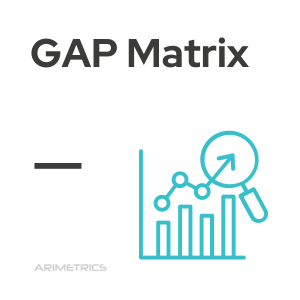 Definition
Definition
The GAP matrix is a tool that helps companies measure the differences between their current and desired performance, in order to identify growth opportunities. It provides a visual representation of the distance separating companies from their targets, allowing them to identify areas that need attention and develop strategies accordingly.
How to create a GAP Matrix
The creation of a GAP Matrix requires a thorough analysis process. First, you need to determine the business objectives, and establish the performance indicators for each of them. These indicators can be quantitative or qualitative, but they must be specific and measurable.
Next, data on the company’s current performance should be collected. This data can come from various sources, such as customer surveys, financial reports, productivity measurements, and more. It is important that the data is accurate and up-to-date.
With the objectives and data in hand, you can proceed to create the GAP Matrix. This matrix is a visual tool that represents the distance between the current and desired performance of the company. To do this, you draw a vertical axis that represents the level of performance and a horizontal axis that represents the business objectives. Points are placed on the matrix to represent current performance and desired performance at each business objective.
Once the GAP Matrix is created, it is possible to identify the areas that need attention and develop the necessary strategies to improve performance. It is important to update the matrix regularly to evaluate the progress of the company and ensure that progress is being made in the right direction.
Benefits of the GAP Matrix technique
Among the benefits of the Gap Matrix we can highlight:
- Clear identification of areas that need attention: The GAP Matrix provides an easy-to-understand visual representation of the company’s current performance in relation to its objectives. This helps to more clearly and accurately identify areas that need attention and may be hindering growth.
- By clearly visualizing the performance gaps that exist, the company can develop specific strategies to address them effectively. This increases the chances of success by focusing on the areas that need the most attention and effort.
- Constant monitoring of progress: The GAP Matrix should be updated regularly to assess the company’s progress and ensure that progress is being made in the right direction. This helps to take quick action in case areas are detected that are not improving and to modify strategies accordingly.
- Improved decision making: The GAP Matrix provides valuable information for strategic decision making. By identifying performance gaps and developing strategies to address them, the company can make more informed and informed decisions regarding its growth and development.
- Increased efficiency and productivity: By focusing on the areas that need attention and developing strategies to address them, the company can increase its efficiency and productivity. By improving efficiency and productivity, it is also possible to reduce costs and improve the quality of the product or service being offered.
